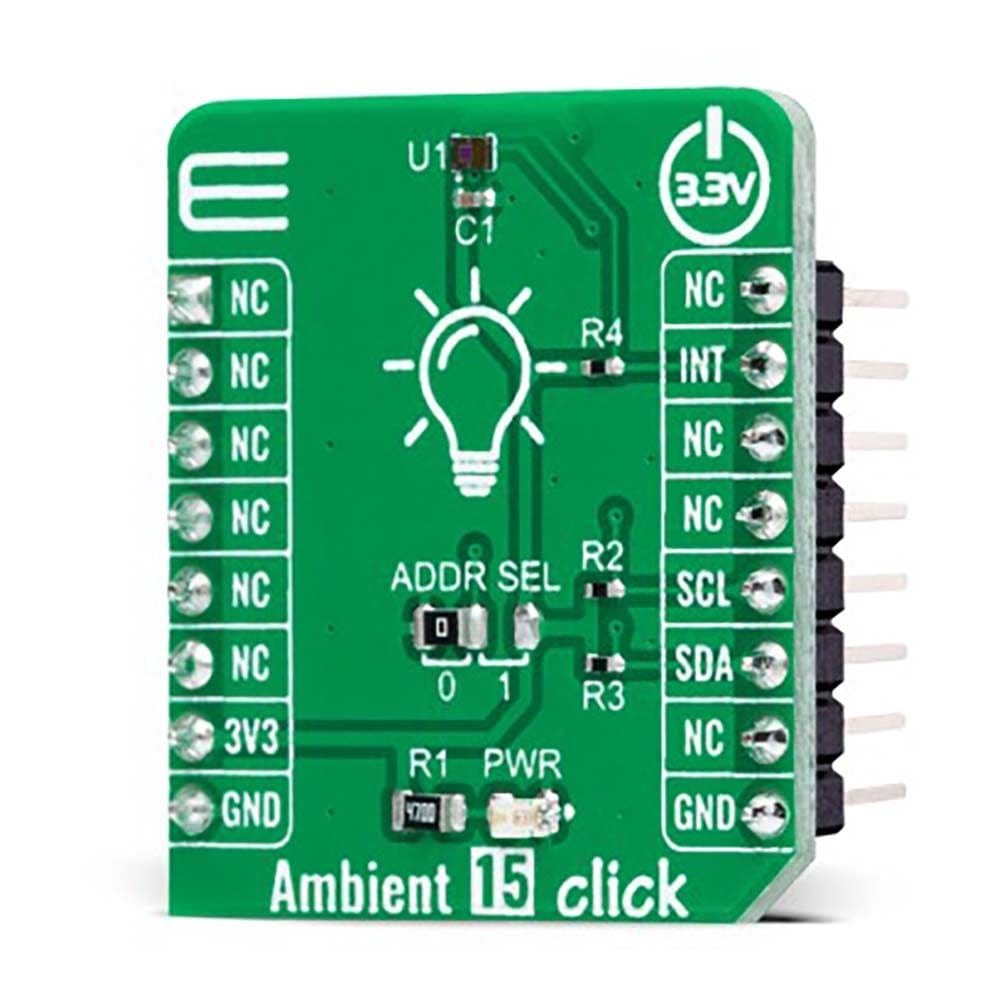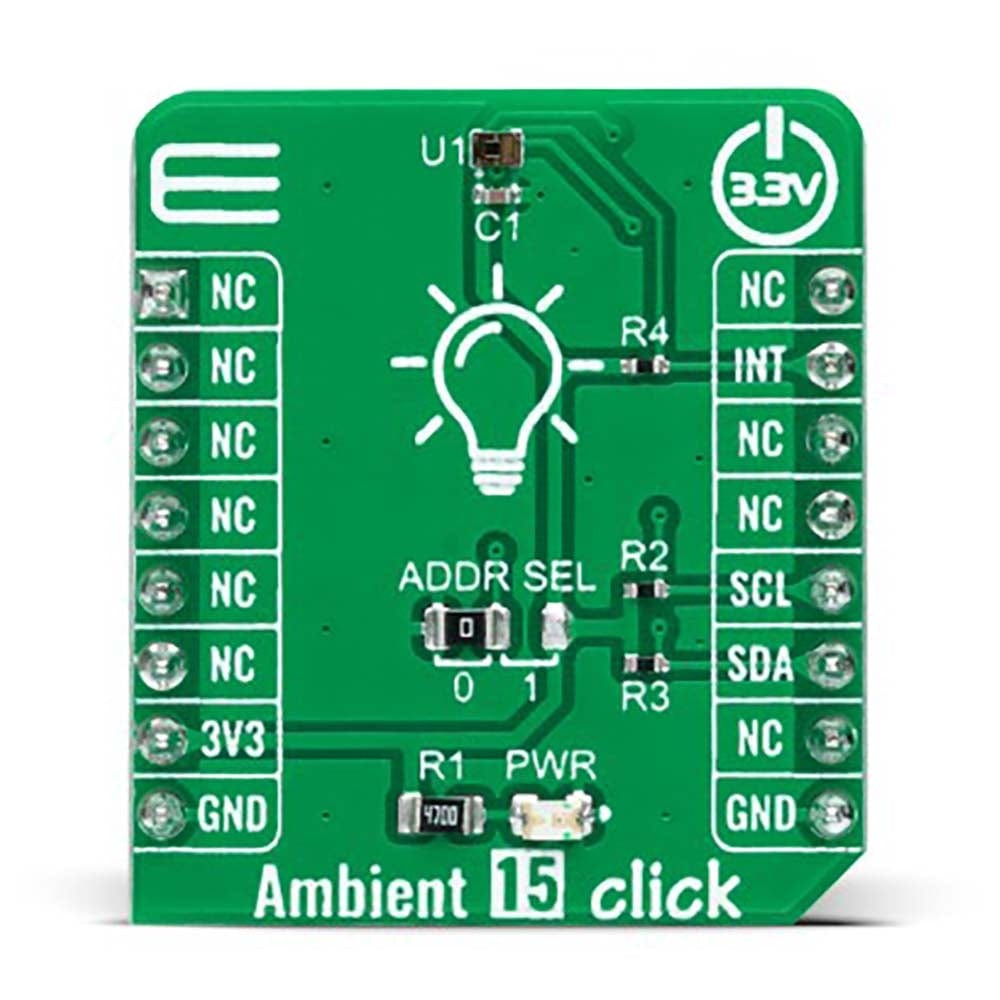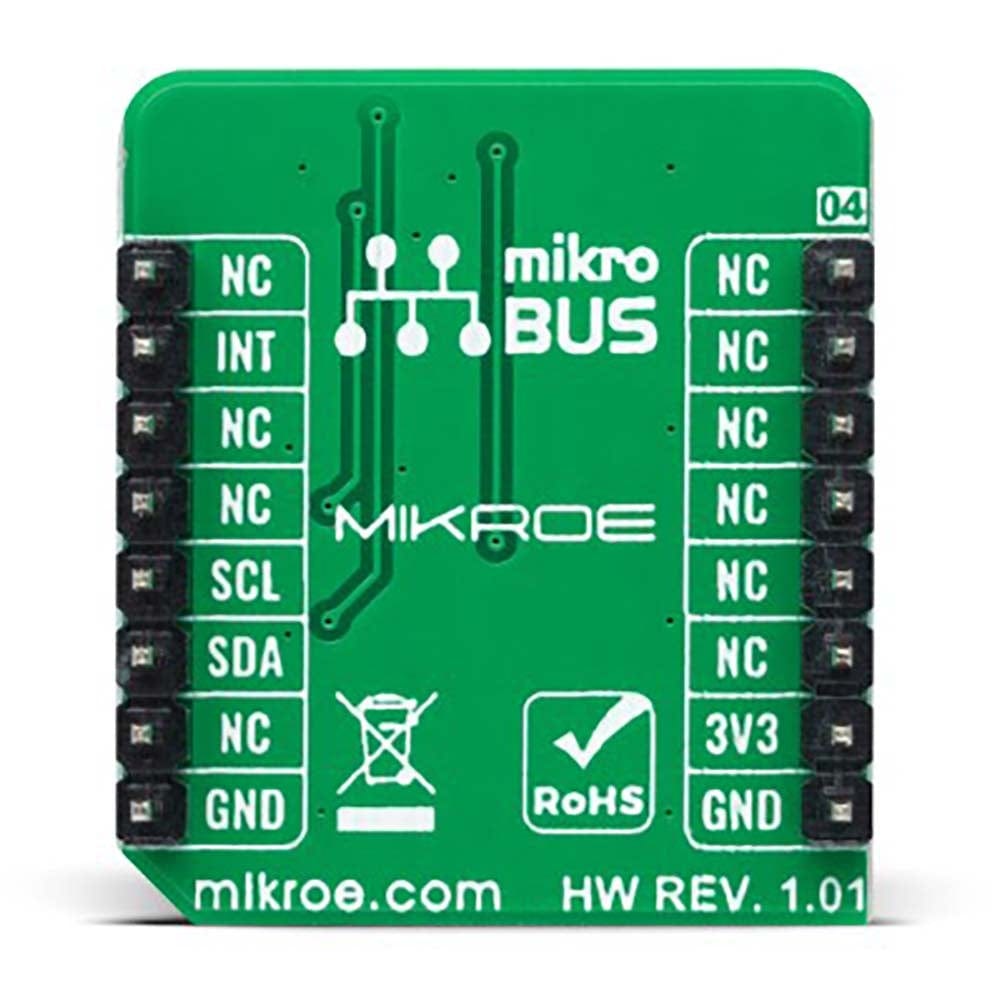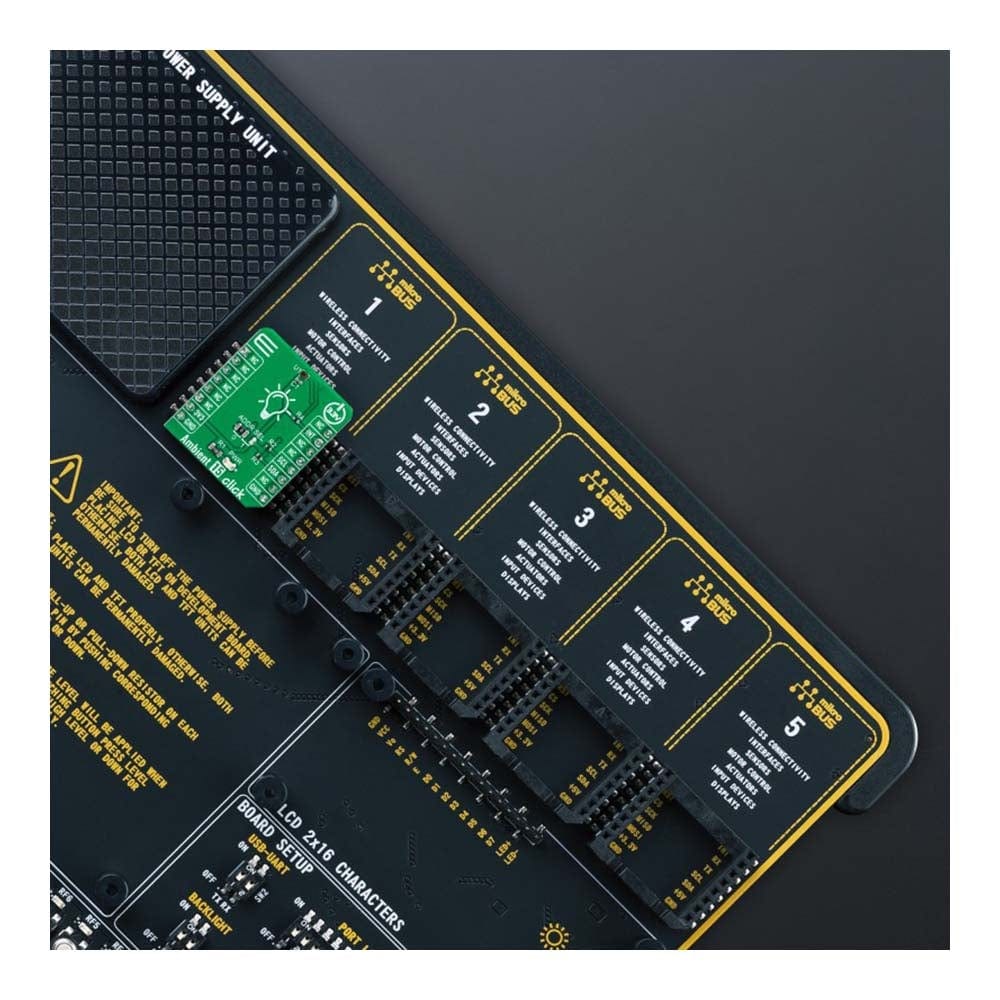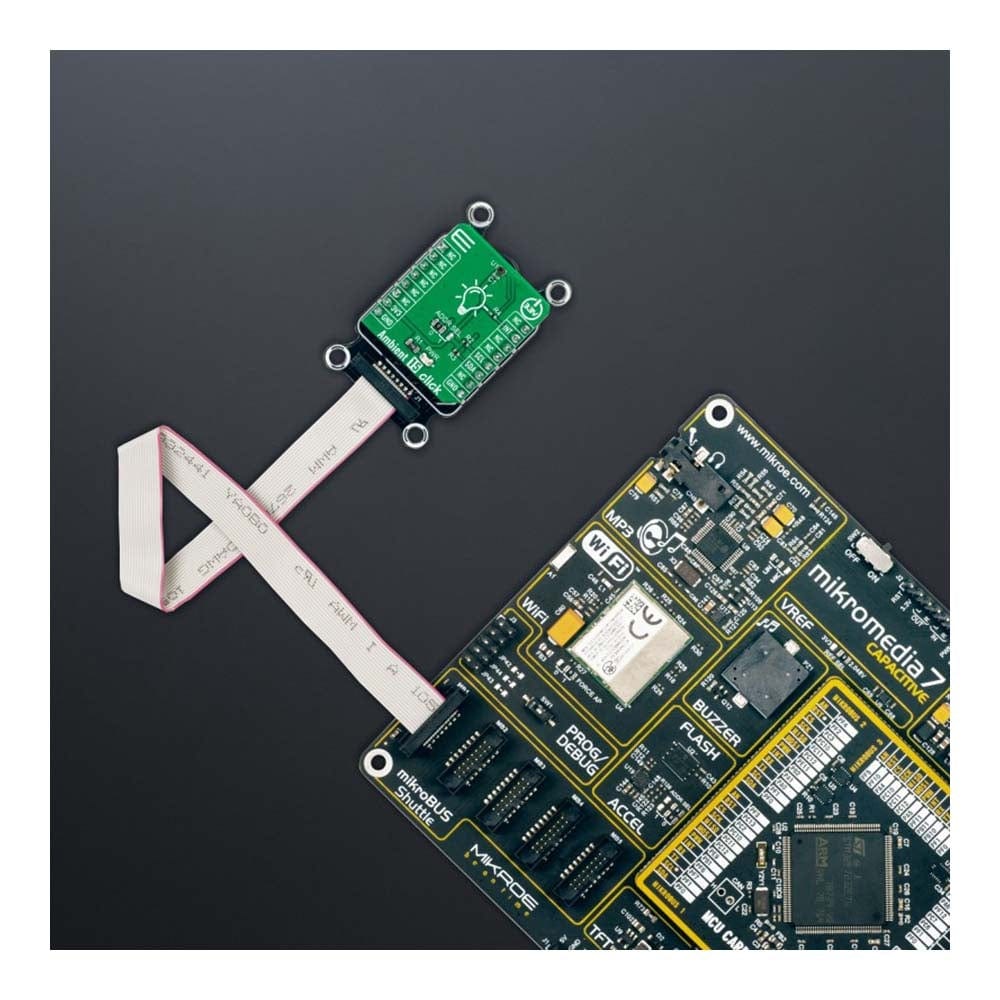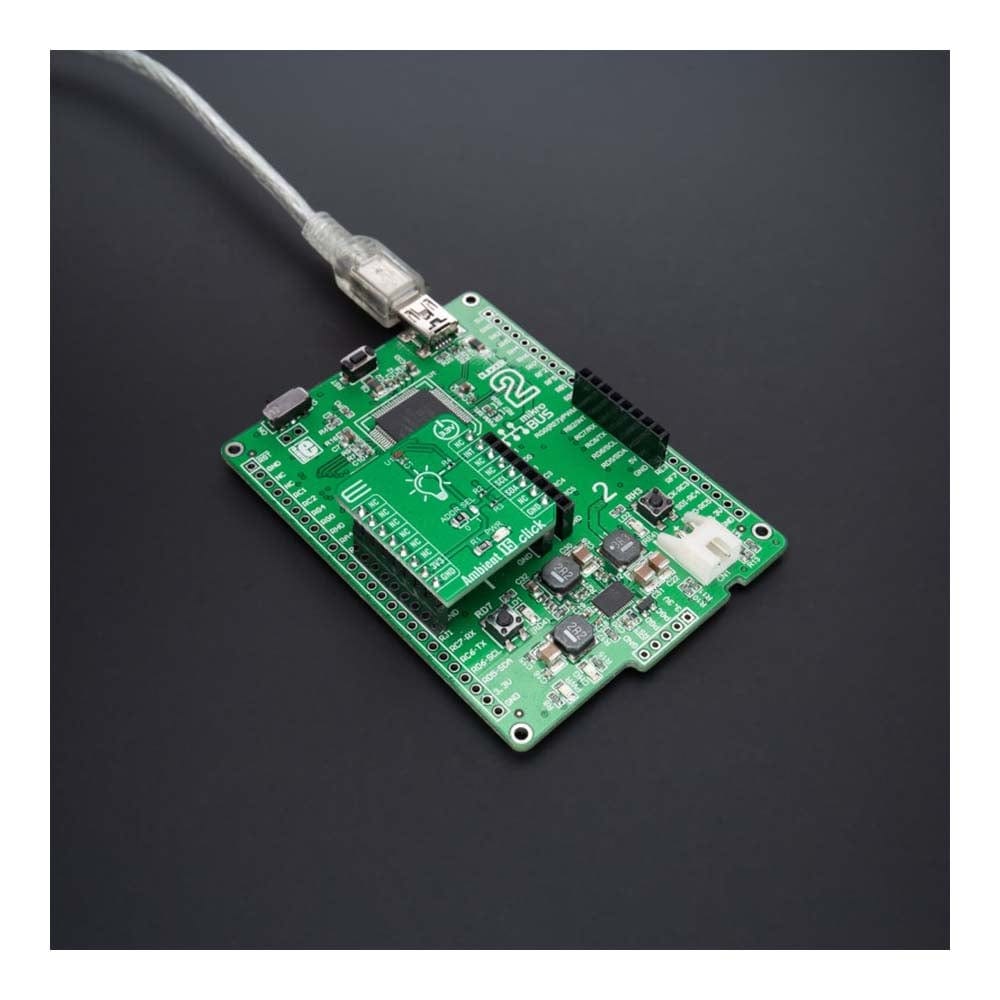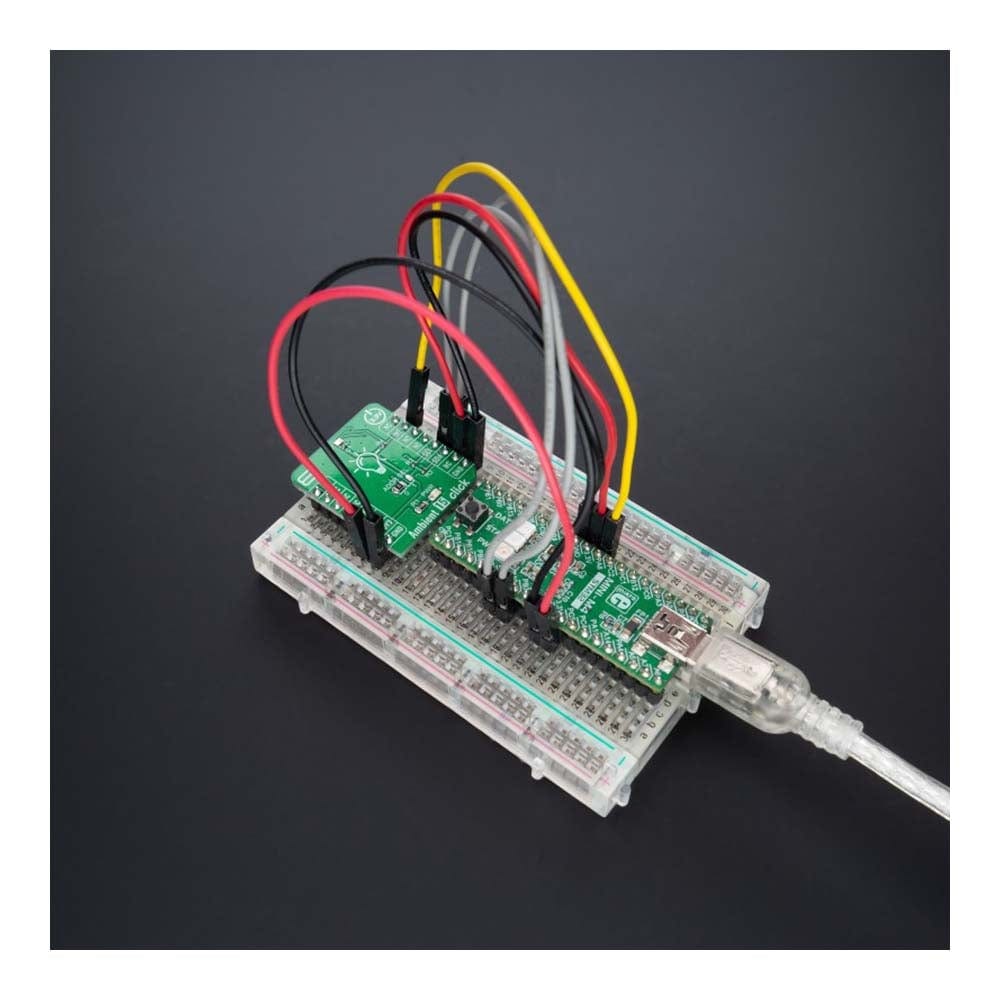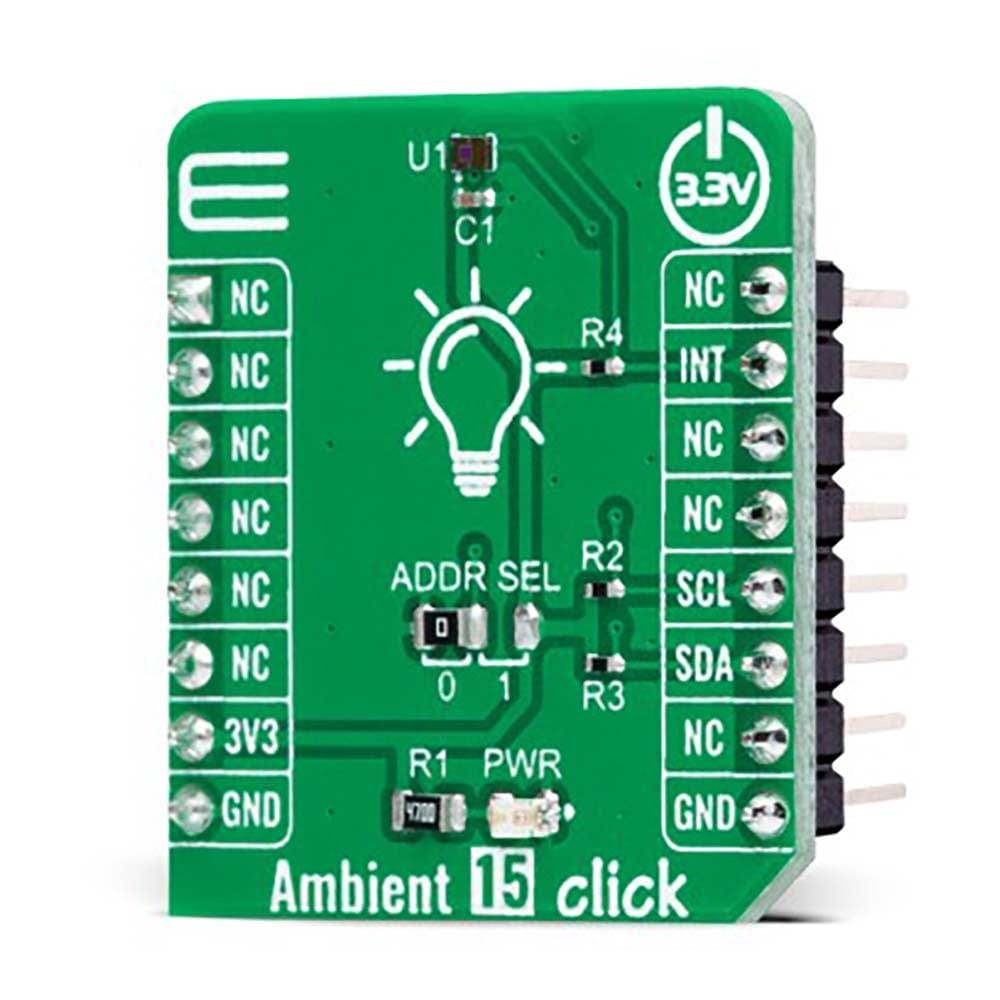
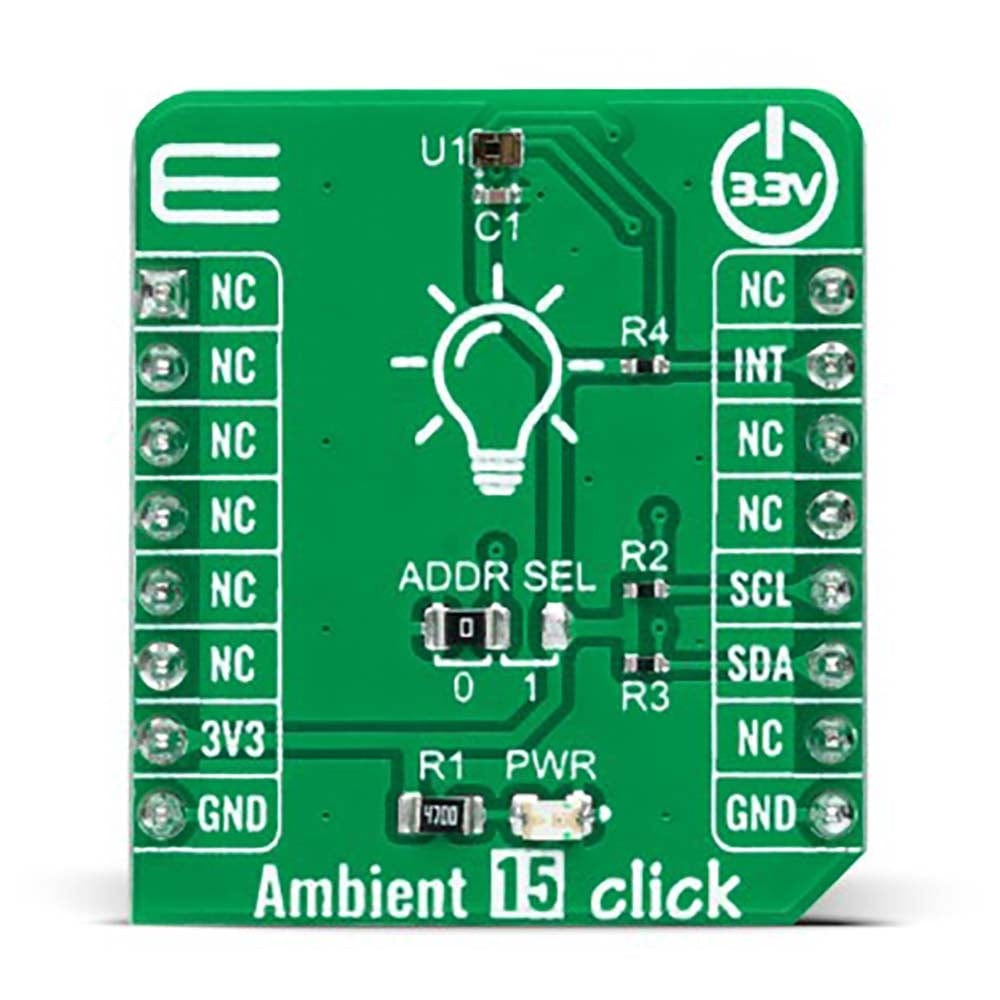
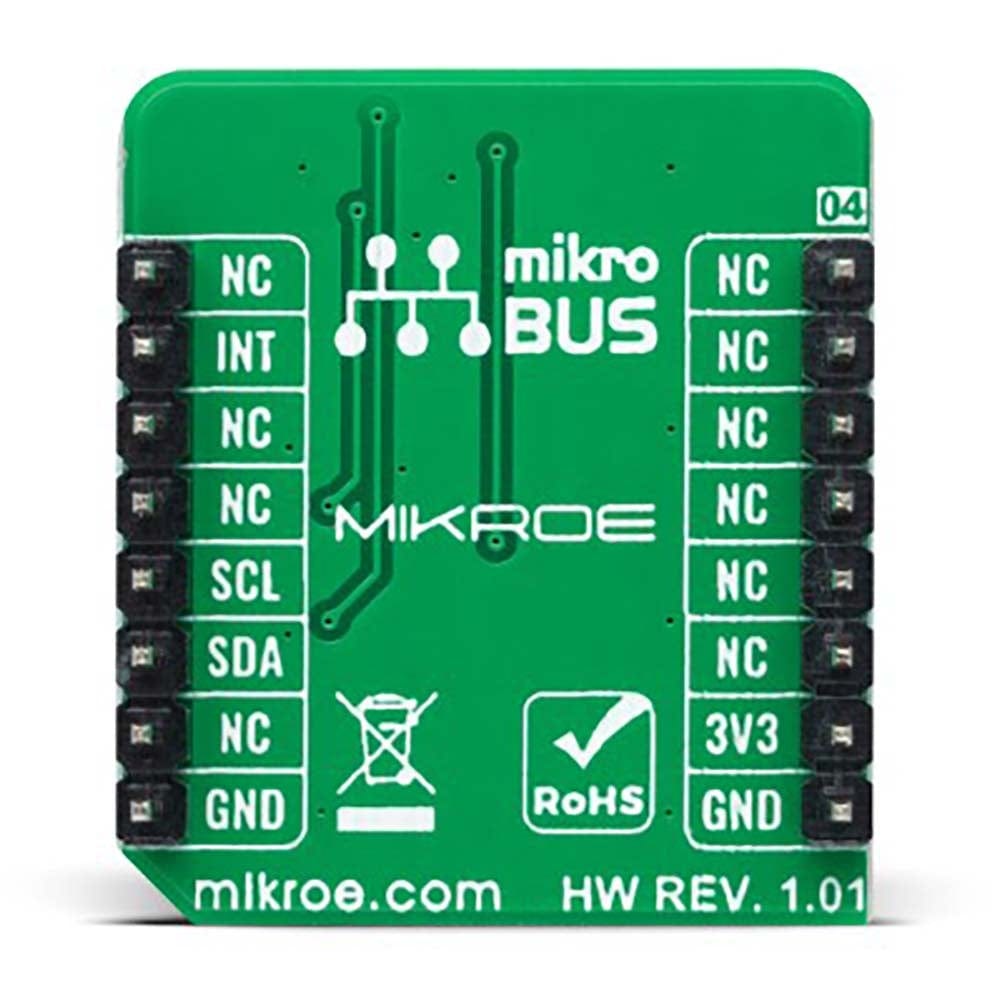
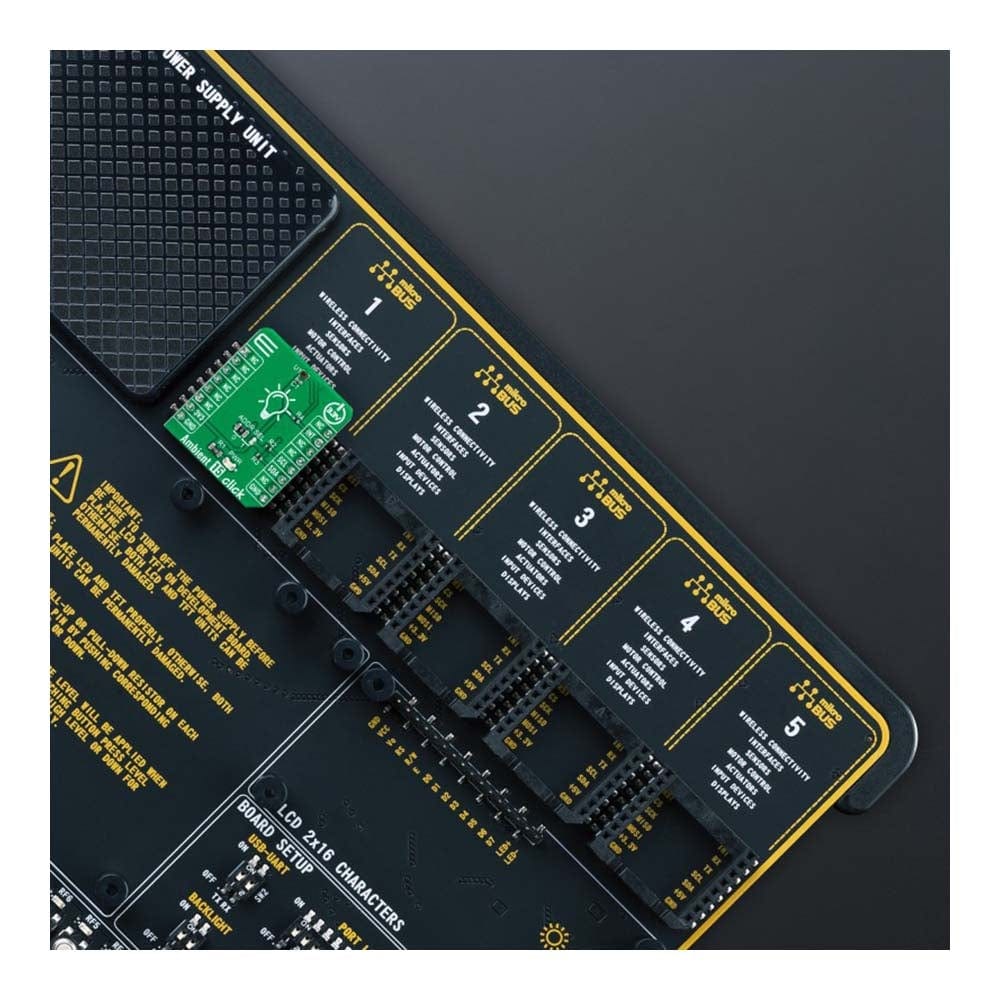
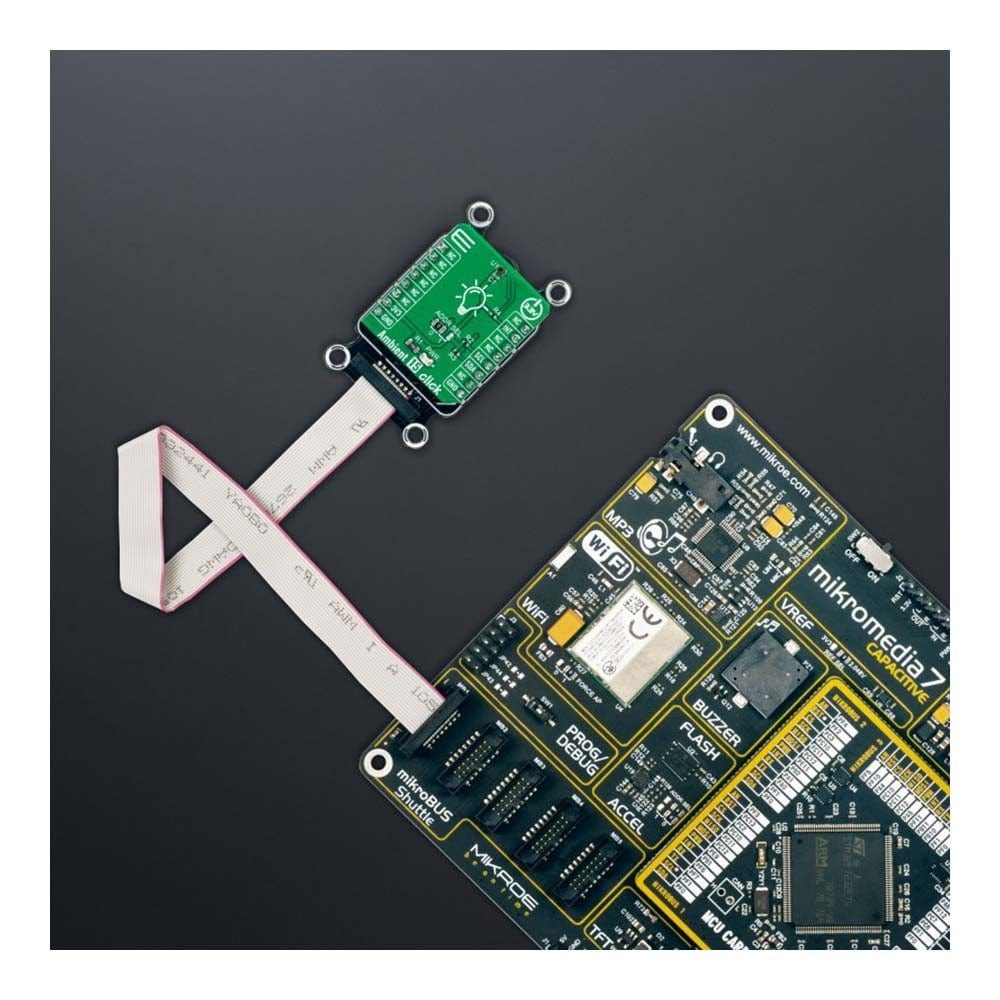
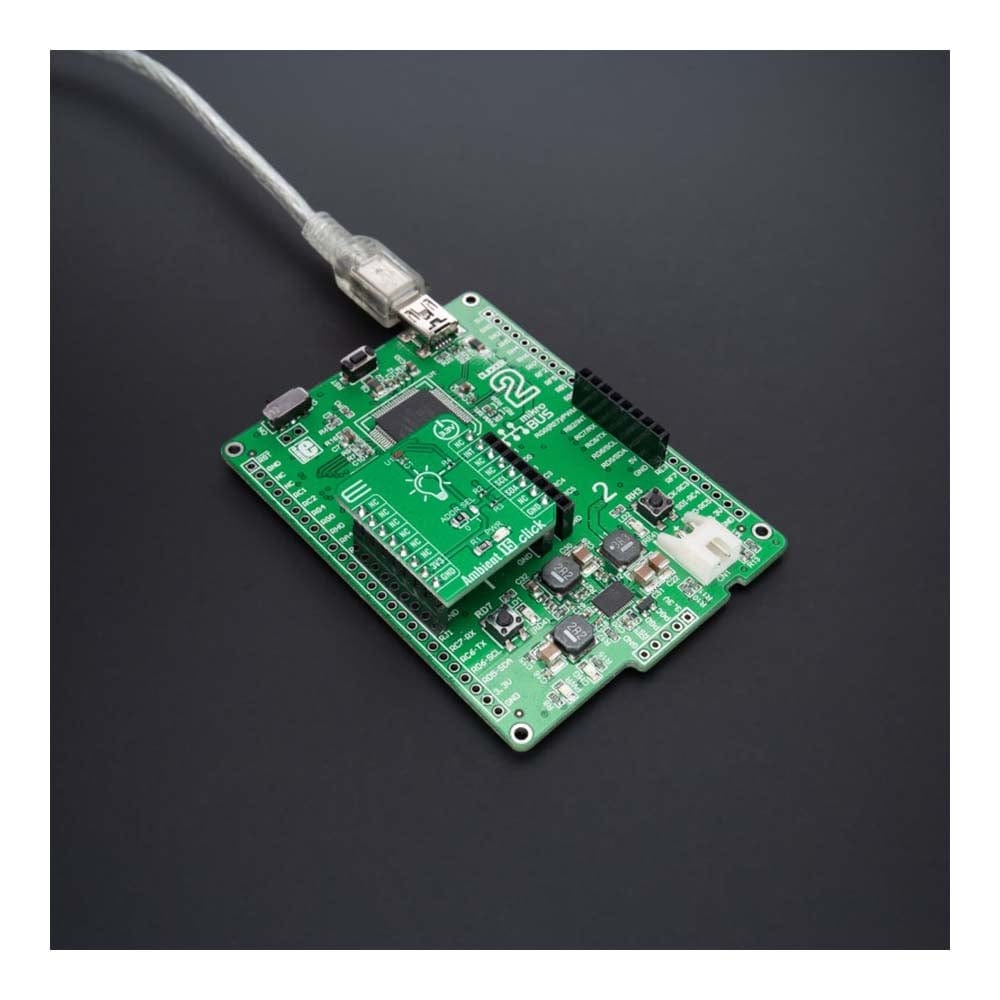
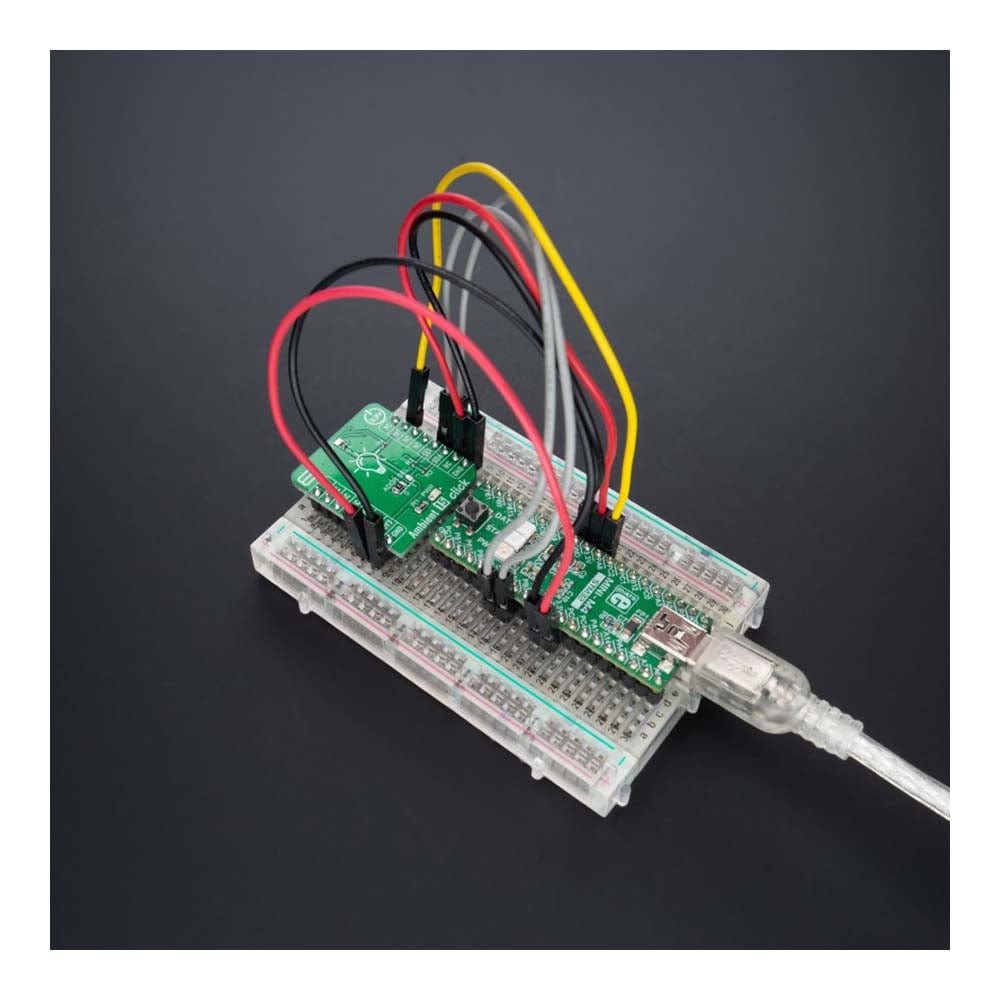
Overview
The Ambient 15 Click Board™ is a compact add-on board used to measure the amount of the present ambient light. This board features the TSL2584TSV, a very-high sensitivity light-to-digital converter with an I2C interface that transforms light intensity into a digital output signal from AMS-AG. The TSL2584TSV’s near-photopic response produces a highly accurate lux measurement up to 33klx even when mounted behind dark glass. Filtering out unwanted IR light enables the sensor to measure the ambient light more accurately, thus producing a near-photopic response. It is designed to control the brightness in various applications based on ambient light availability, brightness for optimum visibility, and energy efficiency. Operation in a temperature range of -40°C to 85°C ensures stable operation under extreme conditions. This Click board™ is the most suitable for obtaining ambient light data for adjusting brightness in applications that require power saving and better visibility.
The Ambient 15 Click Board is supported by a mikroSDK compliant library, which includes functions that simplify software development. This Click board™ comes as a fully tested product, ready to be used on a system equipped with the mikroBUS™ socket.
Downloads
Das Ambient 15 Click Board™ ist eine kompakte Zusatzplatine zum Messen der Menge des vorhandenen Umgebungslichts. Diese Platine verfügt über den TSL2584TSV, einen sehr hochempfindlichen Licht-Digital-Konverter mit einer I2C-Schnittstelle, der die Lichtintensität in ein digitales Ausgangssignal von AMS-AG umwandelt. Die nahezu photopische Reaktion des TSL2584TSV erzeugt eine hochgenaue Luxmessung von bis zu 33klx, selbst bei Montage hinter dunklem Glas. Durch das Herausfiltern unerwünschten IR-Lichts kann der Sensor das Umgebungslicht genauer messen und so eine nahezu photopische Reaktion erzeugen. Es wurde entwickelt, um die Helligkeit in verschiedenen Anwendungen basierend auf der Verfügbarkeit von Umgebungslicht, der Helligkeit für optimale Sichtbarkeit und der Energieeffizienz zu steuern. Der Betrieb in einem Temperaturbereich von -40 °C bis 85 °C gewährleistet einen stabilen Betrieb unter extremen Bedingungen. Dieses Click Board™ ist am besten geeignet, um Umgebungslichtdaten zum Anpassen der Helligkeit in Anwendungen zu erhalten, die Energieeinsparung und bessere Sichtbarkeit erfordern.
Die Ambient 15 Click-Platine wird von einer mikroSDK-kompatiblen Bibliothek unterstützt, die Funktionen enthält, die die Softwareentwicklung vereinfachen. Diese Click-Platine™ wird als vollständig getestetes Produkt geliefert und ist bereit für den Einsatz auf einem System, das mit der mikroBUS™-Buchse ausgestattet ist.
| General Information | |
|---|---|
Part Number (SKU) |
MIKROE-4967
|
Manufacturer |
|
| Physical and Mechanical | |
Weight |
0.02 kg
|
| Other | |
Country of Origin |
|
HS Code Customs Tariff code
|
|
EAN |
8606027389665
|
Warranty |
|
Frequently Asked Questions
Have a Question?
Be the first to ask a question about this.

